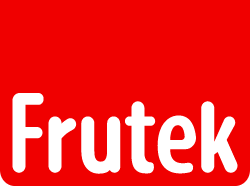Proteins supply the body with amino acids and other carbon compounds, which are necessary for the production of body's own proteins. The protein needs of a growing organism are determined by maintenance needs and growth needs. That's why we have to ensure in a balanced diet enough protein of both animal and vegetable origin: full-fat milk* (350 ml/day) and dairy products, meat (choose tender pieces and remove all visible fat, remove the skin from poultry), fish, eggs, cereals, and pulses (peas, soybeans, beans). It is important to distribute protein foods evenly among the daily meals.
Fats are an important source of energy, especially for young children and later for teenagers, because they cannot eat such amounts of other nutrients (carbohydrates) that would satisfactorily cover their increased energy needs. In a balanced diet, babies from 4 to 12 months need 35 to 45 percent of their daily energy needs in the form of fat, and toddlers from 4 years old need 30 to 35 percent. Fats are also components of the cell wall of each of our cells, they are absolutely necessary for the creation of bile salts, they carry fat-soluble vitamins (A, D, E, and K) and are the only source of two essential fatty acids (linoleic and alpha-linolenic), of which the body forms other essential fatty acids.
Already in early childhood, there are close connections between nutrition, blood fat, and the development of vascular changes. Therefore, after the second year of the child's age, we need to strive to gradually reduce the intake of saturated fats and "trans fats". In doing so, we limit fats of animal origin (pork fat, beef tallow, visible meat fat), offer the child egg yolks two to three times a week, and gradually switch to semi-skimmed milk and dairy products. That's why we include high-quality vegetable fats in the form of oil (olive, rapeseed, corn, soybean, and sunflower) or margarine with the addition of omega-3 fatty acids in the child's diet. Fatty marine fish (mackerel, salmon, tuna) are an extremely important source of dietary fat, as they are a rich source of essential fatty acids. With these measures, we will significantly contribute to the protection of the heart and blood vessels. Fats are always included in meals together with carbohydrates and protein foods.
Full-fat milk*: In 2004, the Extended Professional College of Pediatrics of Slovenia recommended that children drink full-fat milk and consume full-fat dairy products until they start school, but they can slowly switch to semi-skimmed milk and dairy products after the age of two.
References:
- Healthy nutrition guidelines for babies, Ljubljana, 2010
- Reference values for nutrient intake, DACH: Fett, essenzielle Fettsäuren - DGE
- Complementary feeding, ESPGHAN - European Society for Paediatric Gastroenterology Hepatology and Nutrition







